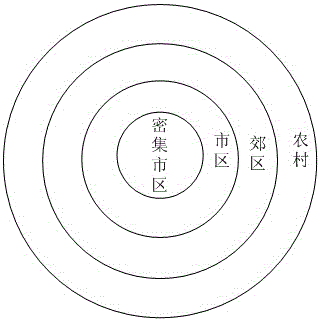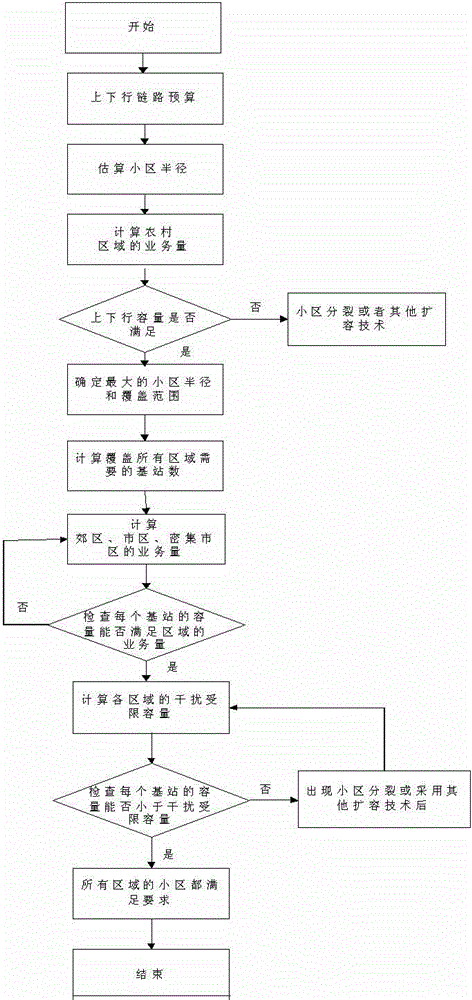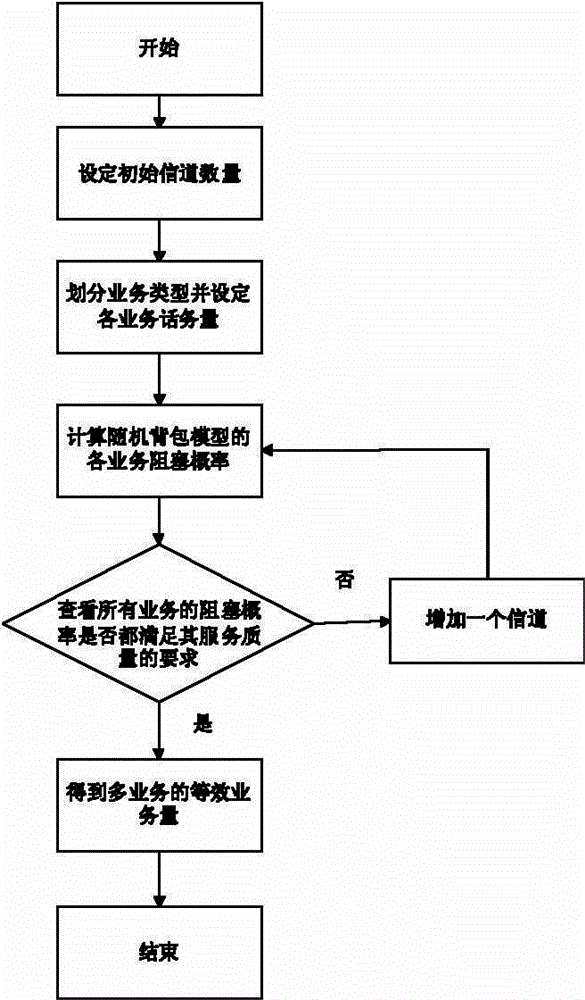Capacity and coverage combined design method for TD-SCDMA (Time Division-Synchronization Code Division Multiple Access) cluster system
A technology of TD-SCDMA and design method, applied in the field of joint design of TD-SCDMA cluster capacity and coverage, and can solve problems such as joint design without considering capacity and coverage, etc.
- Summary
- Abstract
- Description
- Claims
- Application Information
AI Technical Summary
Problems solved by technology
Method used
Image
Examples
example
[0019] The following describes the implementation of the present invention with reference to the accompanying drawings and specific examples.
[0020] figure 1 Shown is the division of coverage areas: the city is the center and radiates outward, and is divided into dense urban areas, urban areas, suburban areas, and rural areas. Similar methods can be used for other area shapes, and a cell type table can be established based on this.
[0021] figure 2 Shown is the flow chart of the design method of the present invention. It specifically includes the following steps, budgeting the uplink and downlink, and obtaining the maximum uplink and downlink loss. The maximum uplink and downlink loss can be calculated according to the following formula: maximum uplink path loss = maximum transmit power of the mobile station - BTS antenna feeder loss +Base station smart antenna gain +Terminal antenna gain - Fast fading margin - Slow fading margin +Switch Gain - Interference...
example 1
[0046] The following method can be used to judge whether the base station can meet the requirements of the uplink and downlink capacity of its coverage area at the same time. One scheduling communication (that is, a group) has one uplink user and one or more downlink users and the downlink users are distributed in one or more In multiple cells, assuming that the average number of downlink users for each scheduled communication is distributed in Nt cells, the ratio of uplink and downlink time slots is 1:Nt, assuming that the average number of personnel for each scheduled communication is Ng, and the business in each cell If the volume is C, the uplink traffic is C / Ng, and the rest is downlink traffic. Under the condition of time slot ratio 1:Nt, it is judged whether the base station can satisfy the uplink and downlink capacity requirements of its coverage area simultaneously (that is, the number of uplink and downlink users who can communicate simultaneously according to the des...
PUM
 Login to View More
Login to View More Abstract
Description
Claims
Application Information
 Login to View More
Login to View More - R&D
- Intellectual Property
- Life Sciences
- Materials
- Tech Scout
- Unparalleled Data Quality
- Higher Quality Content
- 60% Fewer Hallucinations
Browse by: Latest US Patents, China's latest patents, Technical Efficacy Thesaurus, Application Domain, Technology Topic, Popular Technical Reports.
© 2025 PatSnap. All rights reserved.Legal|Privacy policy|Modern Slavery Act Transparency Statement|Sitemap|About US| Contact US: help@patsnap.com



